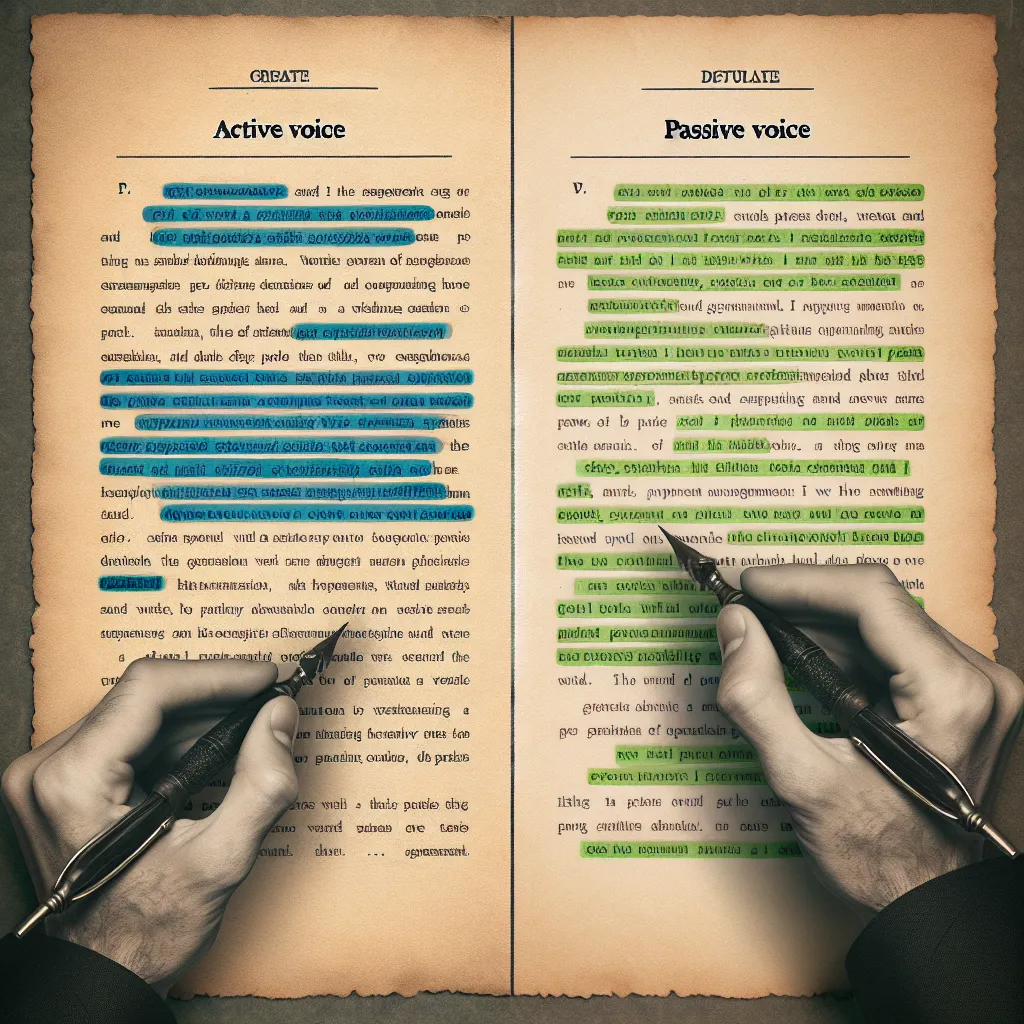In the realm of formal writing, the passive voice plays a crucial role in conveying information objectively and professionally. Whether you’re drafting legal documents, scientific papers, or business reports, understanding how to effectively utilize passive voice can significantly enhance the quality and impact of your writing. This guide aims to provide you with valuable insights and practical tips on Mastering The Use Of Passive Voice In Formal Documents.
 Professional Writing Formal Documents
Professional Writing Formal Documents
Understanding Passive Voice in Formal Writing
Passive voice is a grammatical construction where the subject of a sentence receives the action of the verb, rather than performing it. In formal documents, passive voice serves several important purposes:
- Emphasizing the action or result rather than the actor
- Maintaining objectivity and impartiality
- Creating a sense of distance or detachment
- Focusing on processes and procedures
Understanding when and how to use passive voice effectively is essential for producing high-quality formal documents. Let’s delve deeper into the intricacies of passive voice and explore strategies for its mastery.
The Structure of Passive Voice
To construct a passive voice sentence, follow this basic structure:
Subject + form of “to be” + past participle (+ by + agent)
For example:
- Active: The committee approved the proposal.
- Passive: The proposal was approved (by the committee).
Notice how the object of the active sentence becomes the subject in the passive construction, and the original subject can be omitted or included using “by.”
When to Use Passive Voice in Formal Documents
While active voice is generally preferred in most writing, passive voice has its place in formal documents. Here are some situations where passive voice is particularly useful:
-
When the actor is unknown or irrelevant:
“The experiment was conducted under controlled conditions.” -
To emphasize the action or result:
“The new policy was implemented to improve efficiency.” -
To maintain objectivity in scientific or technical writing:
“The samples were analyzed using spectroscopy.” -
In legal documents to focus on the action rather than the actor:
“The contract was signed on January 15th.” -
To avoid assigning blame or responsibility:
“Mistakes were made in the initial report.”
Tips for Mastering Passive Voice in Formal Writing
To effectively use passive voice in your formal documents, consider the following tips:
1. Be Selective
Use passive voice judiciously. Overuse can lead to vague or wordy writing. Reserve it for situations where it truly adds value to your document.
2. Maintain Clarity
Ensure that your passive constructions don’t obscure important information. If the actor is relevant, include them using “by.”
Example:
- Vague: “The decision was made to increase funding.”
- Clear: “The decision was made by the board to increase funding.”
3. Use Strong Verbs
Even in passive constructions, choose vivid and precise verbs to convey your message effectively.
Example:
- Weak: “The report was done by the team.”
- Strong: “The report was compiled and analyzed by the research team.”
4. Combine with Active Voice
For a well-balanced document, mix passive and active voice. Use active voice for direct, straightforward statements and passive voice for emphasis or objectivity.
Example:
“The company implemented new security measures (active). Access codes were updated, and surveillance systems were installed (passive).”
5. Consider Your Audience
Tailor your use of passive voice to your audience. Legal and scientific documents may require more passive constructions, while business reports might benefit from a more active approach.
 Passive Voice Examples in Formal Writing
Passive Voice Examples in Formal Writing
Common Mistakes to Avoid
When using passive voice in formal documents, be wary of these common pitfalls:
-
Overuse: Excessive passive voice can make your writing dull and difficult to follow.
-
Incomplete sentences: Ensure your passive constructions include all necessary information.
Incorrect: “The meeting was attended.” (By whom?)
Correct: “The meeting was attended by all department heads.” -
Awkward phrasing: Some sentences become awkward when forced into passive voice. If it doesn’t sound natural, consider rephrasing.
-
Loss of agency: Be careful not to remove important actors from your sentences, especially in contexts where responsibility matters.
-
Tense confusion: Make sure your auxiliary verbs (forms of “to be”) agree with your intended tense.
Incorrect: “The policy is implemented last year.”
Correct: “The policy was implemented last year.”
Practical Exercises for Improvement
To hone your skills in using passive voice effectively, try these exercises:
- Rewrite active sentences in passive voice, focusing on formal contexts.
- Analyze formal documents in your field, noting instances of passive voice and their effectiveness.
- Draft a short formal report, consciously incorporating passive voice where appropriate.
- Review your own writing, identifying opportunities to use passive voice for emphasis or objectivity.
For more advanced practice in professional writing, you might find our guide on advanced grammar for professional communication helpful.
Conclusion
Mastering the use of passive voice in formal documents is a valuable skill that can significantly enhance the quality and professionalism of your writing. By understanding when and how to use passive constructions effectively, you can create clear, objective, and impactful formal documents. Remember to use passive voice purposefully, maintain clarity, and balance it with active voice for optimal results.
As you continue to develop your writing skills, consider exploring additional resources on formal writing techniques. Our article on perfecting grammar for legal documents offers further insights that can complement your understanding of passive voice in formal contexts.
Practice regularly, seek feedback, and don’t hesitate to revise your work. With time and effort, you’ll find that using passive voice becomes a natural and effective tool in your formal writing repertoire.




